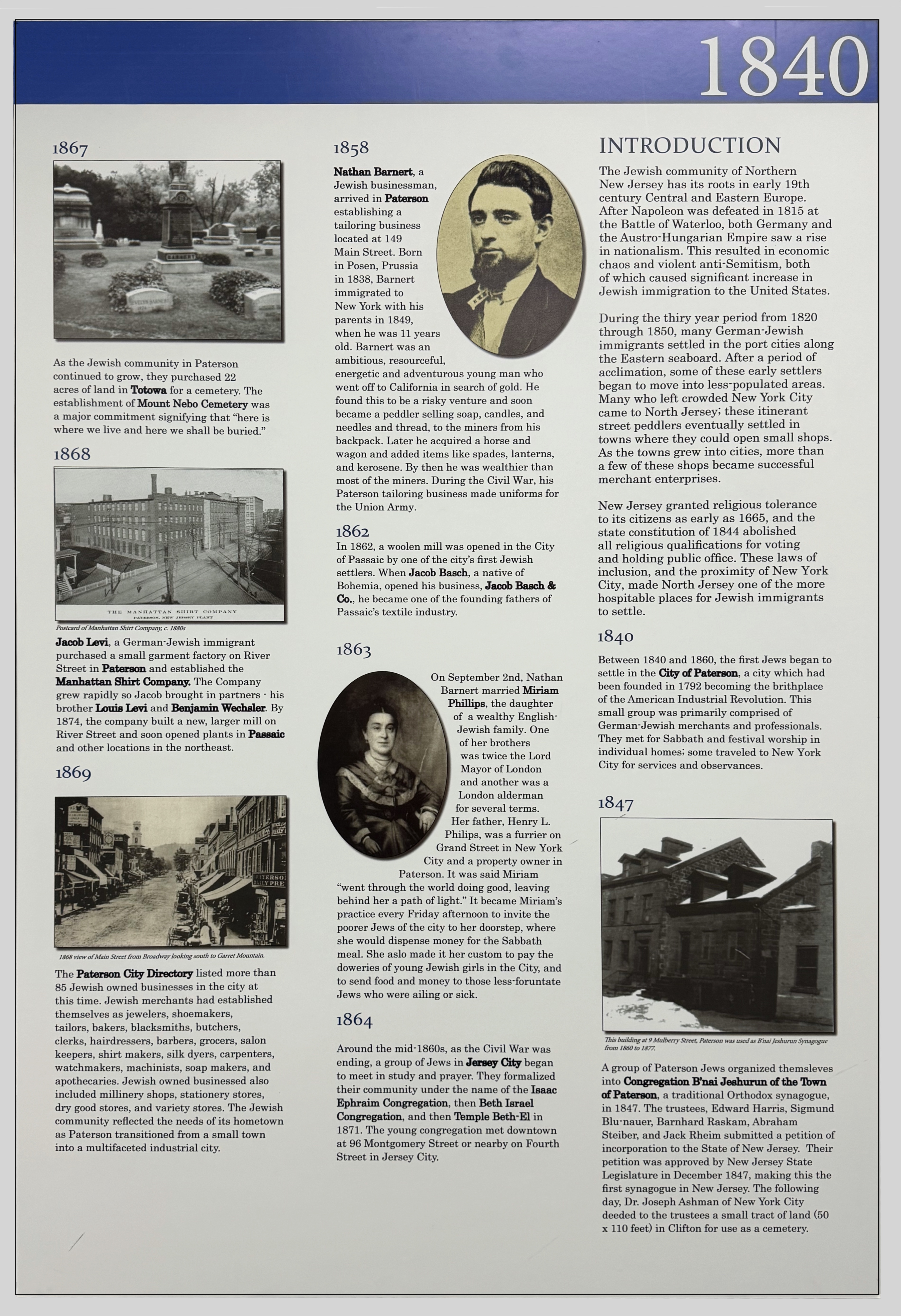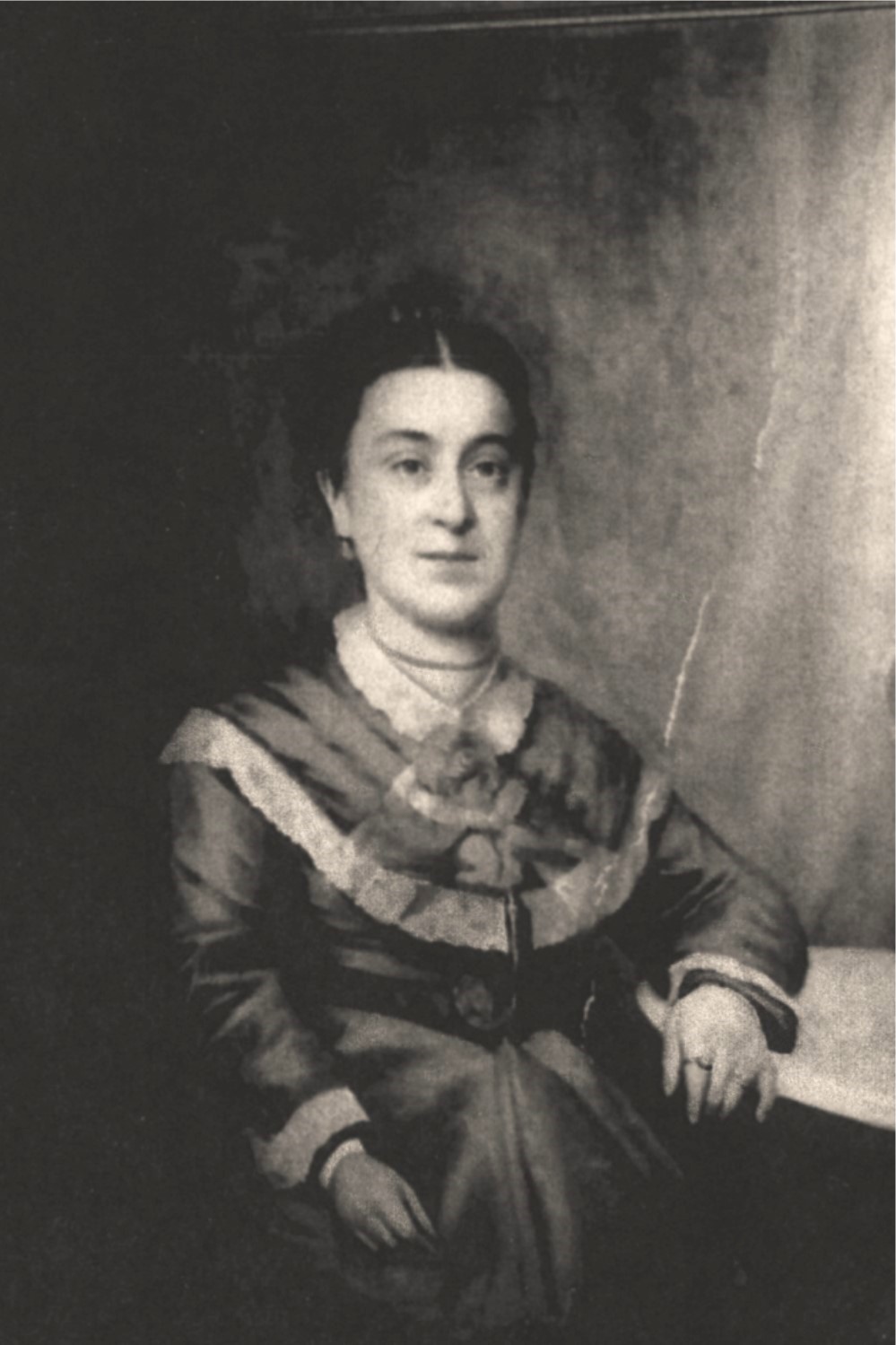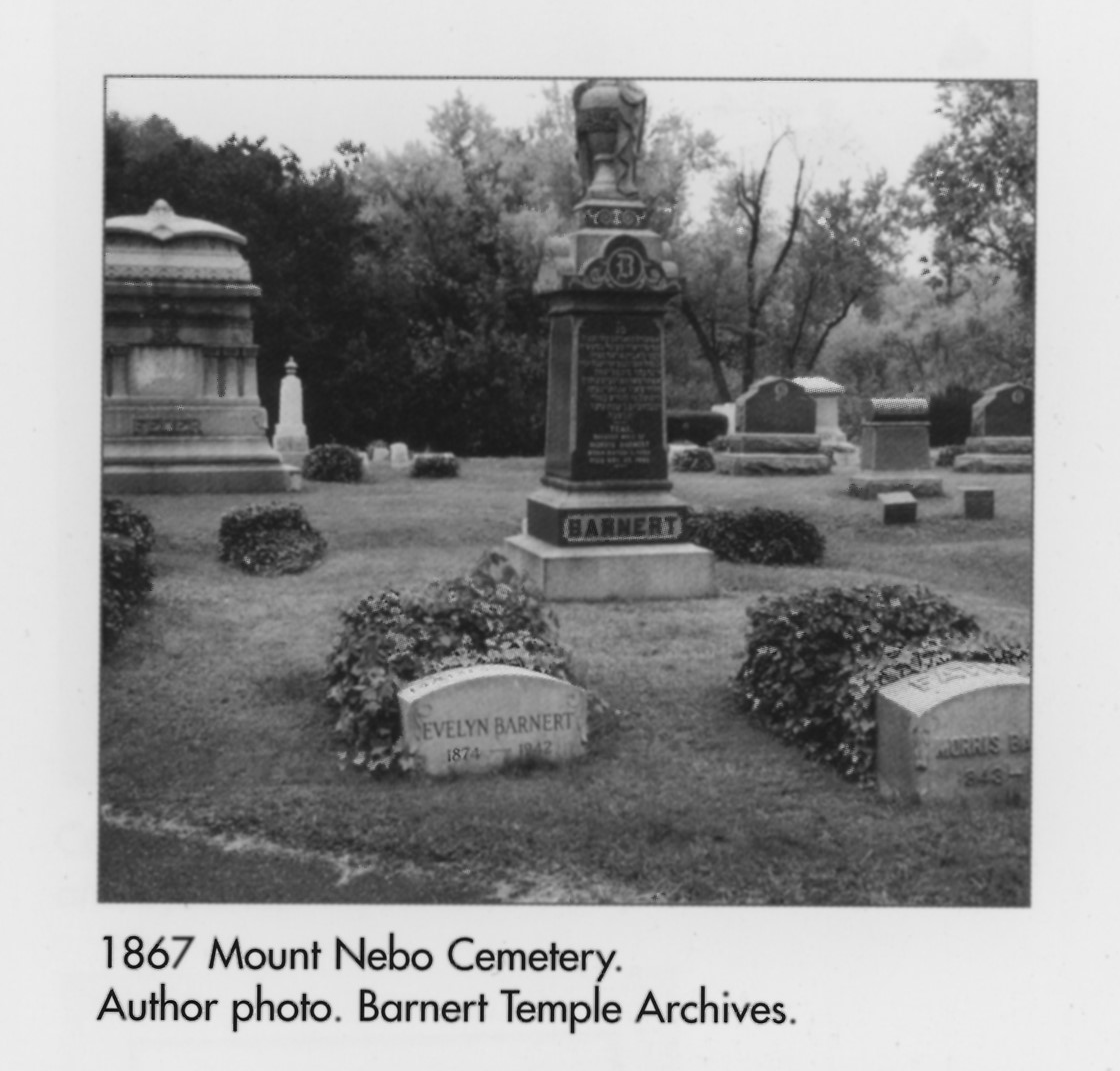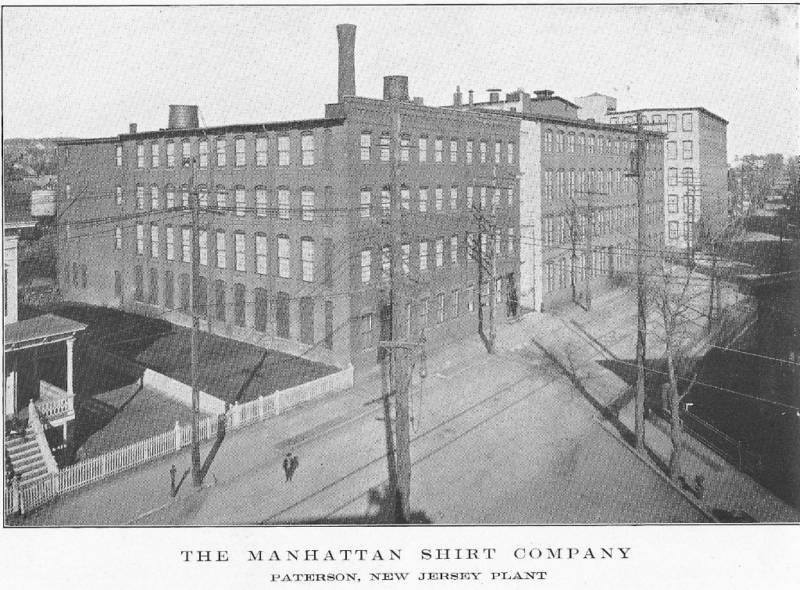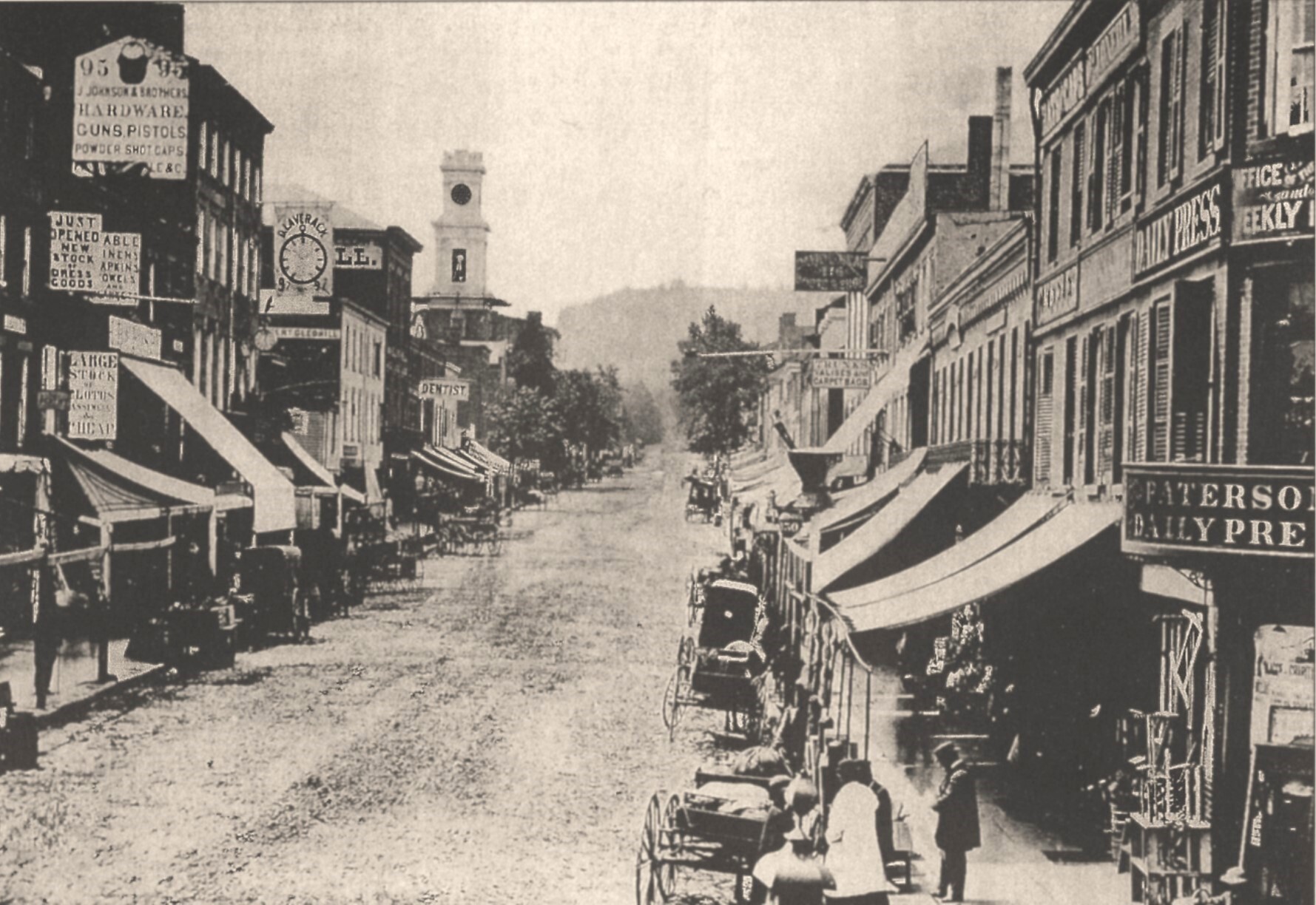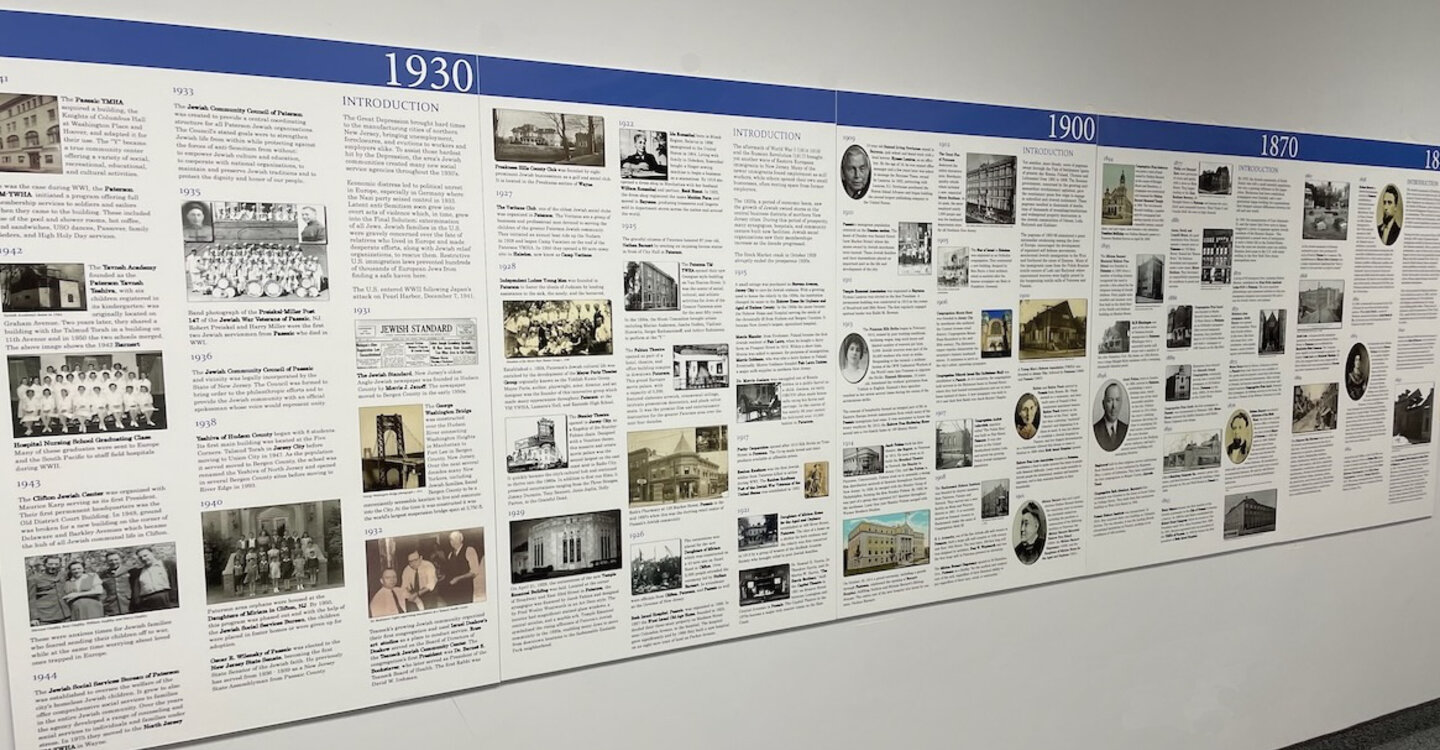
Timeline of the Jewish Community of Northern New Jersey
1840 - 1860's
The Jewish community of Northern New Jersey has its roots in early 19th century Central and Eastern Europe.
After Napoleon was defeated in 1815 at the Battle of Waterloo, both Germany and the Austro-Hungarian Empire saw a rise in nationalism. This resulted in economic chaos and violent anti-Semitism, both of which caused significant increase in Jewish immigration to the United States.
During the thirty-year period from 1820 through 1850, many German-Jewish immigrants settled in the port cities along the Eastern seaboard. After a period of acclimation, some of these early settlers began to move into less populated areas.
thirty-yearMany who left crowded New York City came to North Jersey; these itinerant street peddlers eventually settled in towns where they could open small shops.
As the towns grew into cities, more than a few of these shops became successful merchant enterprises.
New Jersey granted religious tolerance to its citizens as early as 1665, and the state constitution of 1844 abolished all religious qualifications for voting and holding public office. These laws of inclusion, and the proximity of New York City, made North Jersey one of the more hospitable places for Jewish immigrants to settle.
